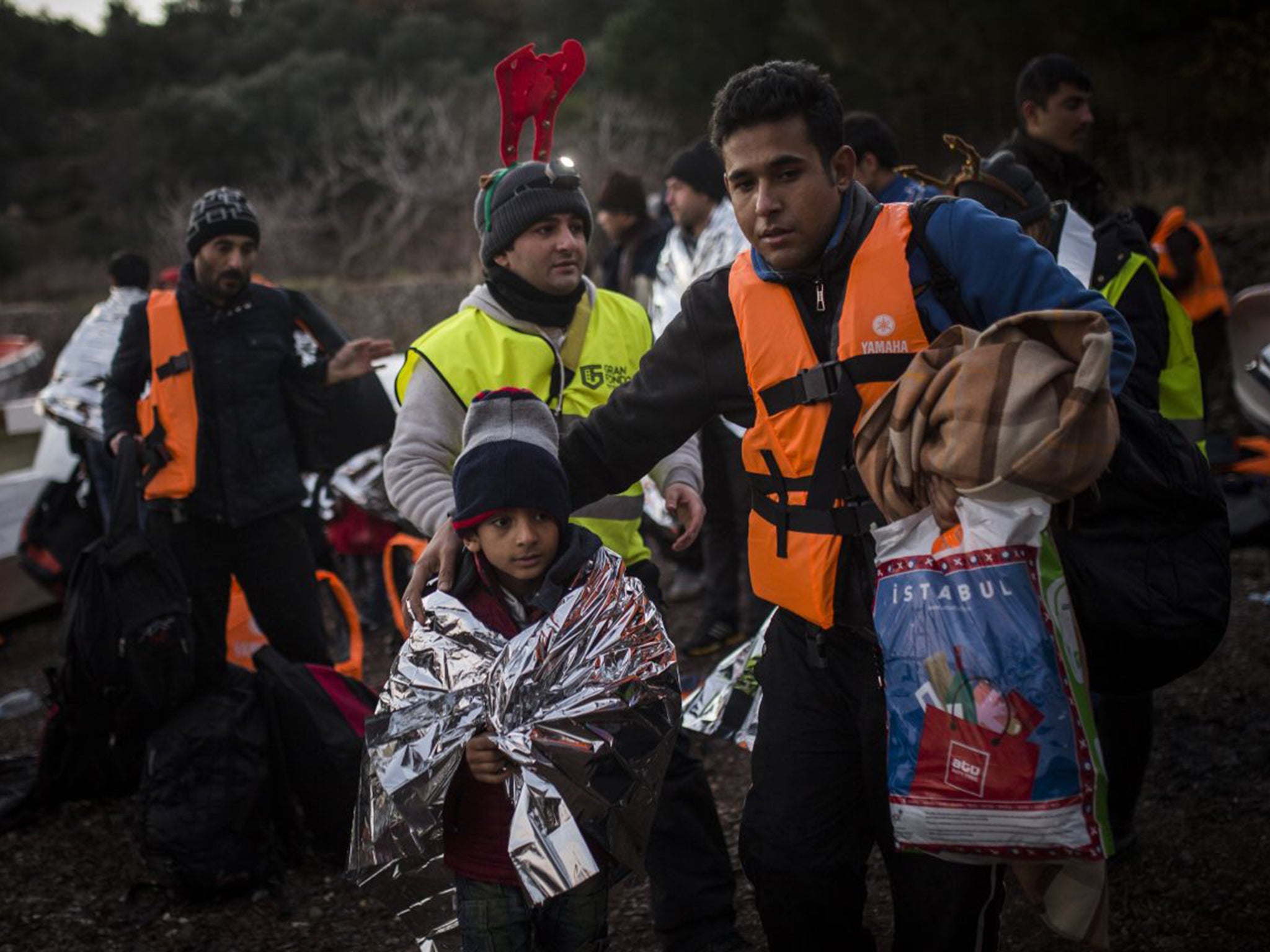Syrian civil war: No end in sight for terrorism or the refugees fleeing to safety
World View: As the conflict enters its fifth year, it is hard to share the optimism of some politicians


It was a year of dramatic events in the war in Syria and Iraq, but the political and military stalemate at the beginning of 2015 was still there at the end of it. The most important change on the ground was the start of the Russian air campaign on 30 September which ended a series of significant defeats for the Syrian army. So far the Russians have helped to restabilise the military situation, but they have not transformed it by capturing the rebel-held half of Aleppo or sealing the Syrian-Turkish border.
The outside world’s perception of the war and its consequences has gone through strange gyrations. After the massacre of 130 people in Paris by an Isis suicide squad on 13 November, there was wall-to-wall coverage of the killings by the media. Television bulletins and newspapers issued apocalyptic warnings about how the slaughter had changed the world, but in the event there was not much new in the policies of the United States and its allies towards Isis and the war.
It may be that the way in which the media provides relentless round-the-clock coverage of a single outrage ends up by becoming a substitute for an effective government response. Over-reaction is followed by under-reaction. Politicians are under intense pressure to do something for a week or more and then under almost no pressure at all. The Isis was reportedly pleased that by deploying a single suicide squad of less than a dozen people in France, it was able to dominate the international news agenda for so long.
There will be more atrocities as Isis employs a distinctive blend of tactics which varies between conventional warfare, guerrilla operations and urban terrorism. Its atrocities are geared to attract maximum publicity and thereby amplify their effectiveness in spreading fear and demonstrating Isis’s ability to strike at its enemies. No real defence is possible against these attacks, since those carrying them out are bent on suicide as a public proof of Islamic faith, and their targets are defenceless civilians.
A depressing feature of the terror attacks and the exodus of Syrian refugees over the past year is that they have not led to an effective policy for ending the Syrian-Iraq war or eliminating Isis. It is difficult to see the peace talks in Vienna scheduled for January getting anywhere because those with real military strength in Syria do not want them to succeed. President Bashar al-Assad and the Syrian army may not be able to win the war with increased Russian and Iranian support but they are unlikely to lose it. The armed opposition, dominated by Isis, the al-Qaeda affiliate Jabhat al-Nusra Front and the ideologically similar Ahrar al-Sham, has likewise every reason to go on fighting.

There is no reason for Assad and his supporters to agree to a political transition whereby a real transfer of power could take place because they still control most of populated Syria. A propagandist claim by opposition sympathisers that Assad’s forces only control 17 per cent of Syrian territory, implying that they have only a weak grip on the country, is highly misleading because so much of Syria is desert or semi-desert.
The real balance of power between the main players in Syria is better expressed by the figures for population in areas held by the different sides. The French cartographer Fabrice Balanche at the Washington Institute for Near East Policy estimates that the population of Syria is now down to 16 million because of the exodus of refugees (it was 23 million before the war). Of these, 10 million people are in government-held districts and 2 million each are in Isis, non-Isis rebel and Kurdish territory.
Isis and al-Nusra are not in the business of negotiating with anybody, and Ahrar al-Sham, which turned up but then withdrew from the recent conference of opposition groups in Riyadh, is divided on the issue. Even supposing some of these factions are willing to talk, what are they being offered? The US and its allies want Assad to go but to preserve the Syrian state, though the Syrian state cannot really be disentangled from the Assad regime. Even if Assad did go but was replaced by somebody from the existing Syrian power structure, why should the opposition accept cosmetic changes in Damascus when they still have a military option? They may not be winning the war but neither are they losing it. Even the more limited aim at Vienna of a ceasefire in parts of Syria will be difficult to achieve if the main armed opposition groups are excluded from the negotiations.
Faced with these problems the US, Britain and other allies have taken refuge in wishful thinking. These fantasies about the political and military landscape of Syria are frequently buttressed by very precise figures. Thus, Assad controls only 17 per cent of Syria, Isis has been driven from 30 per cent of its self-declared caliphate or there are 70,000 moderate Syrian fighters whom we look to as our allies against both Isis and Assad.
President Obama is more realistic about the dangers of greater US or Western involvement in Syria. But even he cannot do without the myth that there are moderate Sunnis on the ground who will be our allies. He says: “The strategy that we are using now – air strikes, special forces and working with local forces who are fighting to regain control of their own country – that is how we’ll achieve a more sustainable victory.” But the identity of these local forces is never revealed, a reticence which is scarcely surprising since they have only a shadowy existence.
Silver linings in Syria and Iraq are hard to detect, but the greater cooperation between the US and Russia in the run-up to the Vienna talks is one of them. The Russian air campaign has energised even if it has not changed US policy in Syria. The Syrian economy is a wreck, the country impoverished and, with the possible exception of Isis, the warring parties are more than ever in need of outside support. It might be possible to pressure Assad and at least some of the opposition into local ceasefires.
As the war enters its fifth year, players may not expect to win, but they have invested so much of their credibility in a successful outcome that they would prefer the conflict to go on rather than accept defeat. This is true in varying degrees of the US, Britain, France, Russia, Iran, Hezbollah, Saudi Arabia, Turkey and the Sunni monarchies of the Gulf. Isis will seek to sharpen sectarian and ethnic differences through its atrocities as it did in Turkey by provoking a renewal of the low-level civil war between the Kurds and the Turkish state. The shooting down of a Russian aircraft by Turkish jets on 23 November underlines the escalation of friction between rival powers.
Europe felt the direct impact of Syrian-Iraqi war for the first time in 2015 in the shape of terrorist attacks by Isis and the mass influx of refugees fleeing the violence. The pressures that brought about these two developments have not diminished so they are likely to be repeated.
Join our commenting forum
Join thought-provoking conversations, follow other Independent readers and see their replies
Comments